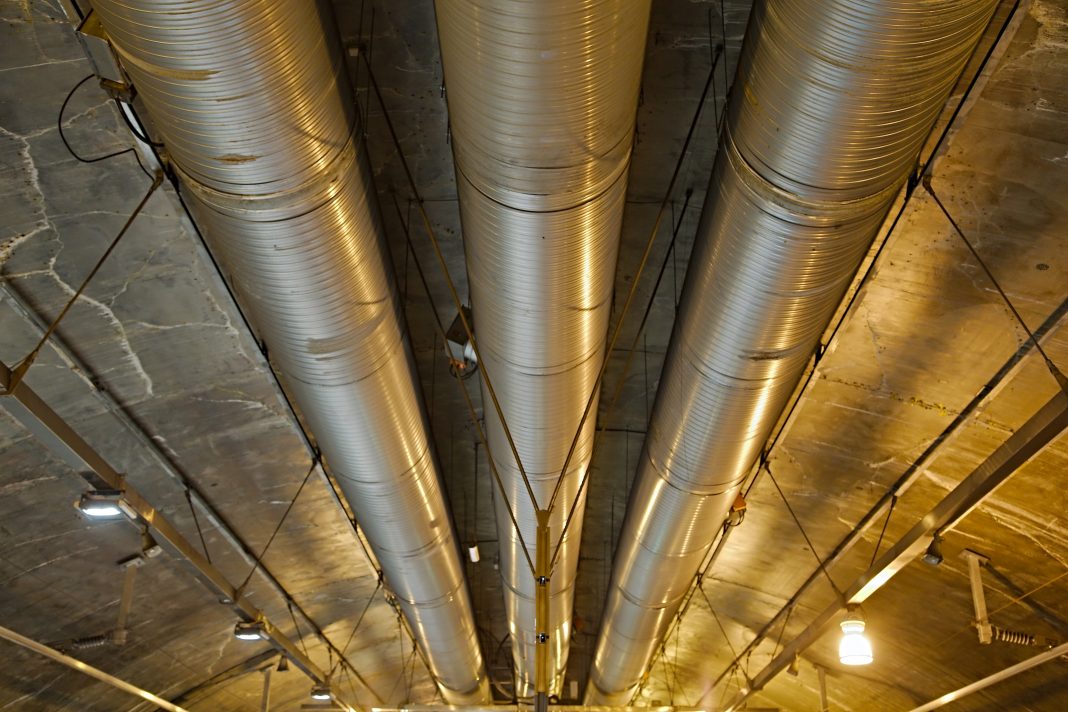As competition continues to mount for increasingly scarce development land, Emily Tetley-Jones of law firm Fieldfisher discusses the practical and legal issues arising from the often-conflicting interests of developers and pipeline operators
Underground pipeline networks covering thousands of kilometres criss-cross the UK, their whereabouts unknown to the vast majority of the British public.
Some of the oldest pipelines date back to the Second World War, when the British government constructed a vast system of subsurface pipelines to transport fuel out of sight of enemy aircraft.
Much of the UK’s existing pipeline infrastructure was put in during the 1960s, and pipelines continue to be laid underground for health and safety reasons and, more recently, to reduce their vulnerability to terrorist attacks.
Today, the vast majority of subsurface pipelines are privately owned by commercial operators and used to transport products, such as aviation fuel and industrial gases, to users including chemical plants, airports and hospitals.
In the last few months, the importance of pipelines has been emphasised by the coronavirus (Covid-19) pandemic and the surge in demand for oxygen to supply ventilators in hospitals. Oxygen is usually delivered in liquid form via various methods, including via the Medical Gas Pipeline System (MGPS).
However, the existence and location of underground pipelines is starting to pose challenges for property and infrastructure developers, who are increasingly finding that the land they want to build on is underlain by significant amounts of active subsurface infrastructure.
Before pressure on land availability became so acute, developers could generally avoid building on sites with pipelines running beneath them.
Now, real estate and planning lawyers are dealing with a steep rise in the number of development consent orders (DCOs) and compulsory purchase orders (CPOs) from developers seeking rights to acquire land known to contain underground pipelines (often running parallel to railway tracks or highways).
But, while the existence of pipelines may be known, the exact location and/or type of all the pieces of equipment involved may not be fully documented.
Locating subsurface pipelines
In many cases, developers only realise that there are large amounts of unregistered subsurface infrastructure running through a parcel of land at a late stage in the process, sometimes a matter of weeks before construction is due to start. This can cause major delays to project timelines.
Typically, ascertaining the existence and extent of pipelines is not a priority for developers, who tend to open dialogue with the relevant infrastructure operators once the project planning process is already fairly advanced.
Experience shows that the later the parties address this issue, the more it costs to resolve and the more fractious the situation becomes.
In most cases, a pipeline operator has no choice but to object to the developer’s plans, or risk losing its rights to access the infrastructure.
In general, these situations tend to unfold in one of two ways – via the invocation of “lift or pay” clauses, or through the use of DCOs or CPOs.
“Lift or pay” clauses
In certain circumstances, a landowner can ask for the pipeline to be moved, or for the pipeline operator to pay compensation according to a “lift or pay” clause in the pipeline deed.
The requirements of these clauses are quite difficult for developers to satisfy, but with rising property values and increasing competition for land, it is becoming worth their while to meet the tests laid down by these clauses.
Usually, parties will need to engage property litigators to address these matters, which frequently take months or sometimes years to resolve.
A common mistake by both developers seeking to invoke “lift or pay” clauses and operators looking to defend against such claims is not taking action quickly enough.
Developers are often in a hurry to meet construction deadlines, while pipeline operators habitually underestimate the complexity of the documentation that needs to be painstakingly assessed by lawyers.
In some cases, the relevant documentation is nowhere to be found, which causes even more of a headache.
DCOs and CPOs
In some cases, where there are known to be multiple, separately-owned pipelines running across a piece of land, developers may decide to opt for a DCO or a CPO, rather than go to the effort and expense of trying to negotiate private rights with each of the operators.
DCOs and CPOs are still costly and time-consuming (usually taking around 18 months from start to finish), but once completed, the developer will obtain the rights to the infrastructure in return for paying compensation to the affected operators.
When faced with a DCO or a CPO, an operator is obliged to ascertain exactly where their equipment is, how much belongs to them and what practical impact losing access will have on their business.
This will determine how much of the equipment needs to be moved and what other actions they need to take to mitigate disruption to their business.
Cost is a major issue, because developers want to pay as little as possible to operators, while the operators want to be fully compensated for the legal costs of going through the DCO/CPO process.
For operators, the downside of fighting a DCO or a CPO is that anything that can be compensated with money alone – such as the expense of rerouting a pipeline or temporary business disruption – is not deemed to be a good enough reason to object to an order.
Valid reasons for objecting are that a pipeline’s position is essential to the operator’s business, or to the local community or economy.
Generally, however, it is in the operator’s interest to agree a deal with the developer, as this reduces cost, time and stress for both sides.
Negotiation pitfalls
If a DPO/CPO is threatened, the parties can negotiate a Protective Provisions Agreement, under which an operator withdraws its objection in return for developer ensuring the operator will be granted a new lease for its pipeline in a different location, plus other indemnities and protections. This is usually the most secure option for a pipeline operator.
Sometimes, however, an agreement to move or even install a pipeline is simply done on a handshake, without the necessary legal documentation being put in place. In most cases, this sterilises the operator’s right to that pipeline, which is protected as a physical asset but not as a legal right which must be replaced after the DCO/CPO takes effect.
The exception to this is that some deeds of easement (created before 13 October 2003) are “overriding interests” that affect and bind the land, even though they do not appear on the registered title, and will override a developer’s registration of the land in its name.
Such overriding unregistered interests are a particular risk for developers, as they do not appear on the deeds for packages of land they hope to buy. Comprehensive preliminary enquiries of the seller and elsewhere are needed to try to flush out the existence of these overriding interests.
In these cases, the confirming authority will send letters to every party they know stands to be affected by the sale of the land and ask them to respond to a questionnaire about their interests in that piece of land – meaning it is then up to pipeline operators to declare their interests.
Outlook for UK pipeline operators
As highlighted by the Covid-19 pandemic, the UK’s network of subsurface pipelines are an essential part of national infrastructure, also providing indispensable supplies to major industrial users which are vital to the British economy.
But with more and more land being bought up by large development companies, most of which have deep pockets and long lead times, battles for land rights are becoming increasingly common and increasingly fraught.
For parties on both sides, the best advice is to open discussions as early as possible when valuable rights are at stake, and to seek legal advice on all the potential options.
Emily Tetley-Jones
Director, real estate
Fieldfisher
+44 (0)20 7861 4340
emily.tetley-jones@fieldfisher.com
Twitter: @Fieldfisher
LinkedIn: Fieldfisher

















